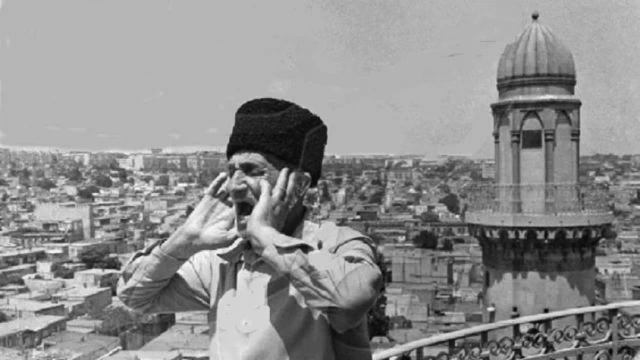After the Soviet occupation, the activities of religious institutions were halted due to the Bolshevik-Communist regime's stance on religion. Many religious figures, scholars, and mujtahids were exiled, and some were subjected to repression. Mosques were converted into warehouses and factories, holy books were burned, and strenuous efforts were made to make people forget religion in every possible way and sever them from their religious roots. This harsh policy of the Kremlin continued until the years of World War II.
In the 1940s, certain reforms were made to the government's religious policy to effectively control the existing religious situation and to gain sympathy among the religious population during the difficult war years. The formation of religious boards was deemed inevitable during this period. In 1943-1944, by relevant decisions of the Presidium of the Supreme Soviet of the USSR, the following independent Muslim religious boards were created to provide practical leadership to Muslim facilities and clergy in the USSR:
The Spiritual Board of Muslims of the European Part of the USSR and Siberia (in Ufa);
The Spiritual Board of Muslims of Central Asia and Kazakhstan (in Tashkent);
The Spiritual Board of Muslims of the Transcaucasus (in Baku);
The Spiritual Board of Muslims of the North Caucasus and Dagestan (in Makhachkala).
The Spiritual Board of Muslims of the Transcaucasus was established by Resolution No. 17 of the Presidium of the Supreme Soviet of the USSR on April 14, 1944.
From May 25-28, 1944, the First Congress of the Transcaucasian Muslims was held. The Congress elected Akhund Agha Alizade as the chairman of the Spiritual Board of Muslims of the Transcaucasus (SBMTC) and he was given the religious title of Sheikh-ul-Islam. The purpose of creating the SBMTC was to provide religious leadership to the Muslims living in the republics of Azerbaijan, Georgia, and Armenia, and to the mosques in these republics.
It is particularly important to emphasize that the Spiritual Board of Muslims of the Transcaucasus was an organization established in a completely new direction. Since the time of the Tsarist government, religious boards here had operated as two independent, separate bodies for Sunni and Shia. When the Spiritual Board of Muslims of the Transcaucasus was established in May 1944, religious leadership for religious institutions, mosques, and clergy belonging to both Muslim denominations was carried out jointly by a single board, as it was during the period of the Azerbaijan Democratic Republic. Taking into account the numerical ratio of Shia and Sunni believers among the Muslims living in the Transcaucasus, 4 of the 7 members of the board were chosen from the Shia denomination and 3 from the Sunni denomination. The representative of the majority, the Shia, held the position of chairman and was given the title of Sheikh-ul-Islam. The representative of the Sunni held the position of deputy chairman and received the title of Mufti.
Since 1980, Sheikh-ul-Islam Allahshukur Pashazade was elected to the position of chairman of the Spiritual Board of Muslims of the Transcaucasus. The election of His Eminence the Sheikh-ul-Islam strengthened the activities of the CMB and led to an increase in the board's influence throughout the country. It is no coincidence that Sheikh-ul-Islam Allahshukur Pashazade was elected a people's deputy of the Supreme Soviet of the USSR in 1989 and a deputy of the Supreme Soviet of the Azerbaijan SSR in 1990. At the initiative of His Eminence the Sheikh-ul-Islam, the scope of the CMB's activities was expanded, and for the first time, a religious educational institution, the Baku Islamic Madrasah, was established in Azerbaijan. Soon after, the Baku Islamic University was founded on the basis of this madrasah. New mosques began to be built in all regions of the republic, and hundreds of new religious communities began their activities.


